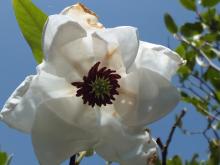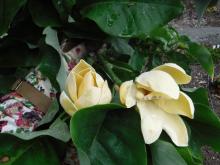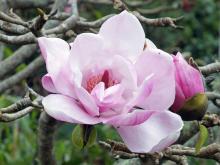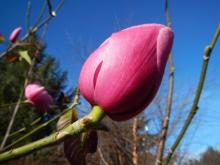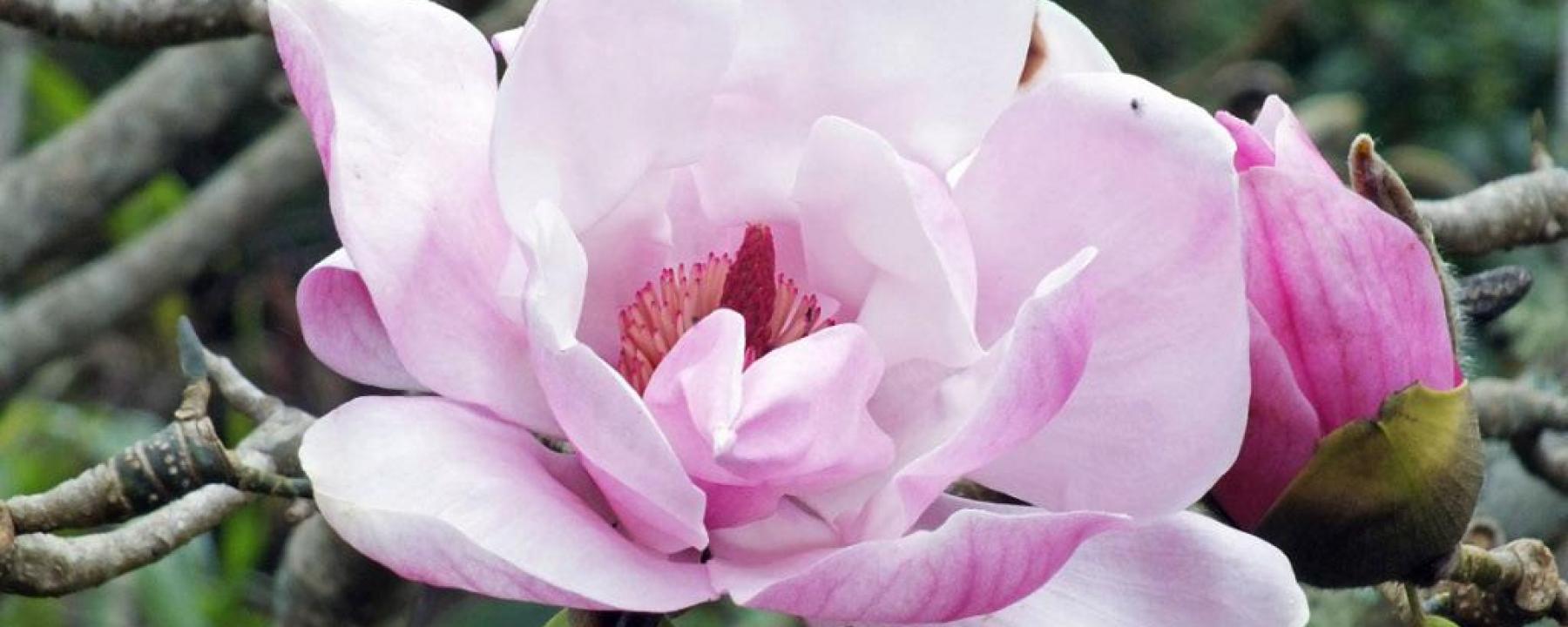
Humboldt Botanical Garden‘s Moss Family Temperate Woodland Garden is home to many Magnificent Magnolias.
The first magnolia introduced into garden cultivation, about 1678, was Magnolia virginiana from missionary John Banister who had taken up the chaplaincy for Virginia. He sent seeds to his friend and fellow church man Henry Compton in England. The Magnolia grandifloria was soon to follow in 1730. The first of the Chinese magnolias entered cultivation about 1780 with the introduction of Magnolia denudata (Yulan or lily tree) introduced by Joseph Banks.
Magnolias are very old in the scheme of flowering plants with fossil records dating to the Tertiary period 2-65 million years ago. When the Artcic zones were relatively ice free Magnolia forests circled most of the Northern Hemisphere. The formation of the polar ice caps reduced these vast forests to south eastern North America, Central America and South America and central China, Japan and Korea.
Because magnolias evolved before bees it is thought that they were pollinated by beetles, thus making for their strong waxy and often fragrant flowers.
The Moss Family Temperate Woodland Garden is bordered on the north by the Schmidbauer Allée of 28 Magnolia denudata which bloom in early spring with large strong creamy white flowers on naked branches. The leaves soon follow and in fall the trees have large brilliant red fruits which grace the branches, and offer birds nutritious seeds.
Magnolia wilsonii, from Yunnan China, grows as a small shrubby tree. Its downward-facing flowers appear in early spring with pure white petals and rose-red stamens. The flowers have a light lemony fragrance and are followed by cylindrical cones in fall.
Magnolia wilsonii
Magnolia ‘Yellow Bird’ is a Magnolia aucminata hybrid developed by Brooklyn Botanical Garden. Its daffodil yellow flowers emerge with its young new leaves. Flowering at HBG continues sporadically through the summer.
Magnolia ‘Yellow Bird’
Magnolia ‘Caerhay’s Bell’ is a complicated hybrid of Magnolia sargentiana robusta. It is one of the earliest flowering magnolias at HBG, generally flowering in late January through February with huge 12-inch plus pink-magenta flowers. Its early flowering is a bonus and a boon in that the brilliant flowers come on naked limbs in profusion; however wind and rain can strip a week’s worth of flowers overnight leaving the ground painted with the brilliantly colored petals.
Magnolia ‘Caerhay’s Bell’
Magnolia sprengeri ‘Diva’ has large rose-pink flowers which come just before the leaves unfurl, it blooms prolifically in early spring and tends to have a flower or two through summer.’ Diva’ produces many fruiting bodies which become brilliant red and persist through fall.
Magnolia sprengeri ‘Diva’
Magnolia grandiflora ‘St Mary’, the evergreen Southern magnolia, is the stuff of legends and one of North America's most famous flowering trees. The blooms are huge, up to a foot across, and immaculate white with a smooth, waxy texture. The pristine blooms, which are held at branch tip, are framed by some of the darkest and glossiest evergreen foliage with fuzzy brown leaf backs to be found anywhere making for a perfect presentation of form and color. Magnolia grandiflora ‘St Mary’ blooms most heavily in spring but usually has a few blooms to delight visitors all year.
These are just a few of the Magnificent Magnolias which add year-round interest, color and form to the Moss Family Temperate Woodland Garden.

